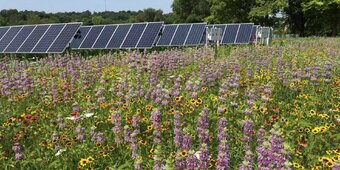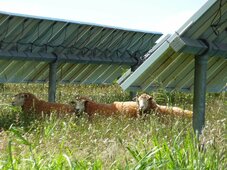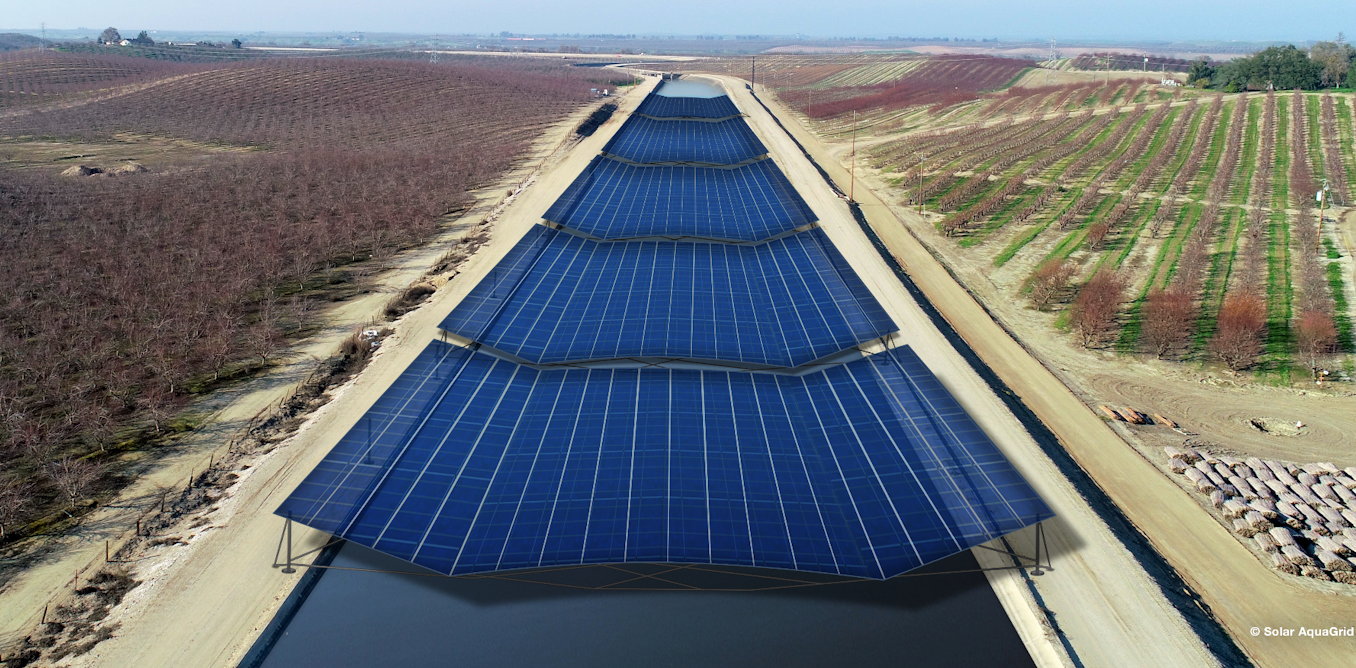Well, let's do the math.
Solar PV is now about 23% efficient and has an albedo of .3. That means that 23% of the energy falling on it is converted to electricity and 30% is reflected back out. That means that of the energy hitting the panel, 47% is wasted as heat. That gives an overall thermal efficiency of 32%. The average efficiency of a coal fired power plant is 33%. So if you replaced coal power plants with PV, the heat wasted per unit of energy generated would be a wash.
Of course that doesn't account for CO2 emissions, which tend to trap heat and do a lot of warming. PV wins there.
It also assumes that the land had an albedo of 100% before you put the solar panels there - but that's never true. So let's look at it from a total heat generated in a given area approach. Like I mentioned, solar panels have an albedo of about .3 and an EFFECTIVE albedo of .53. This is because the absorbed energy isn't all turned into heat; some is turned into electricity, and Maxwell says there's no free lunch - so that energy going away from the panels via the wires can't warm up the panel any more. Some other common albedos:
Fresh asphalt 0.04
Open ocean 0.06
Worn asphalt 0.12
Conifer forest 0.12
Tar roof 0.12
Deciduous forest 0.17
Bare soil 0.17
Tile roof 0.20
Green grass 0.25
Desert sand 0.40
New concrete 0.55
Ocean ice 0.50 to 0.70
Fresh snow 0.80
Aluminum 0.85
This means that if you replace forest, plain dirt, grass or desert with panels, the overall heat absorbed by the area goes down. And of course if you cover roads or roofs with panels the heat absorbed goes WAY down.
"But wait" you say. "I see more rising air over solar farms than over forests!" That's definitely true. Forests generate far more heat - but they are also transpiring water. And it requires a lot of heat to evaporate water, which is why forests are often cooler. The total heat absorbed is higher, but it's locally cooler.
And of course Maxwell still gets his say, and that heat is returned to the system when that water condenses in the form of clouds, rain, snow or dew.






